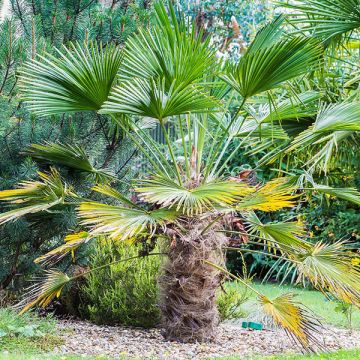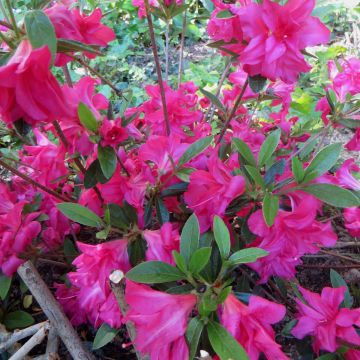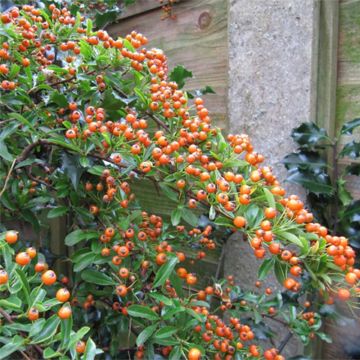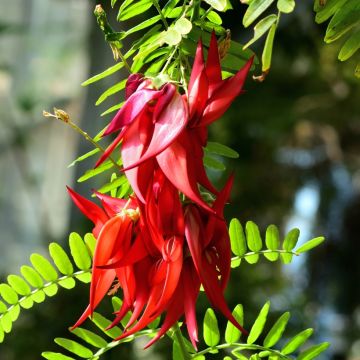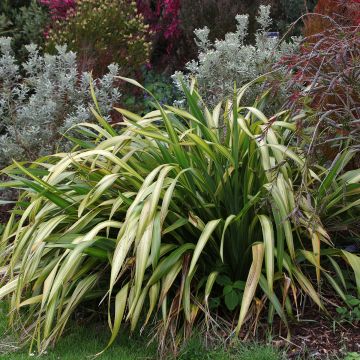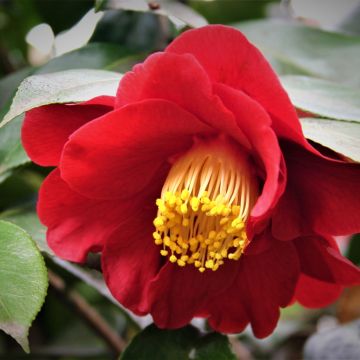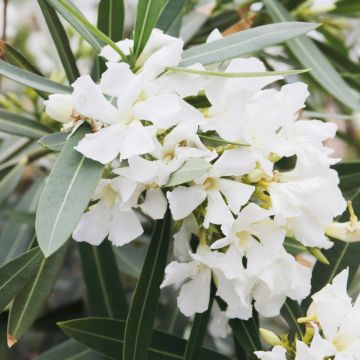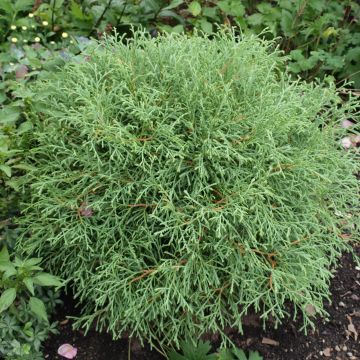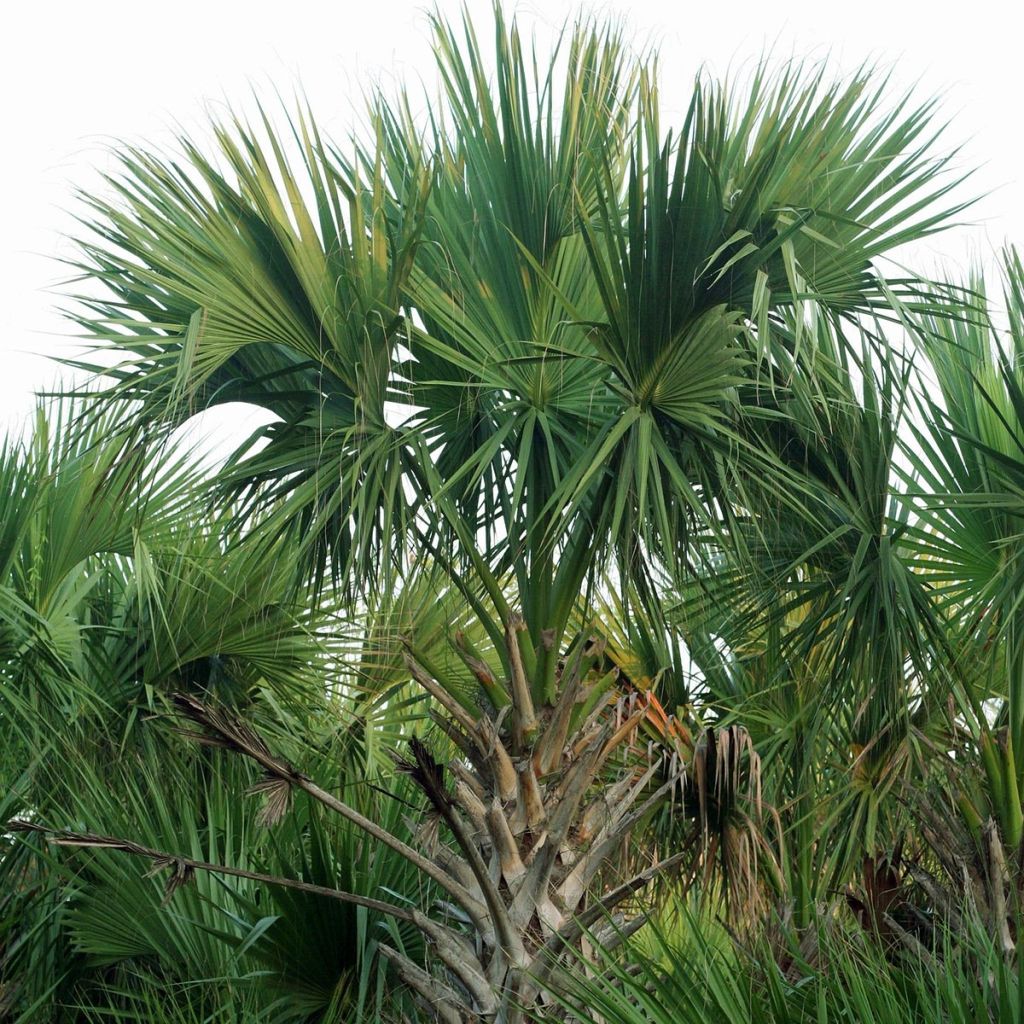

Sabal mexicana - Palmier sombrero du Mexique
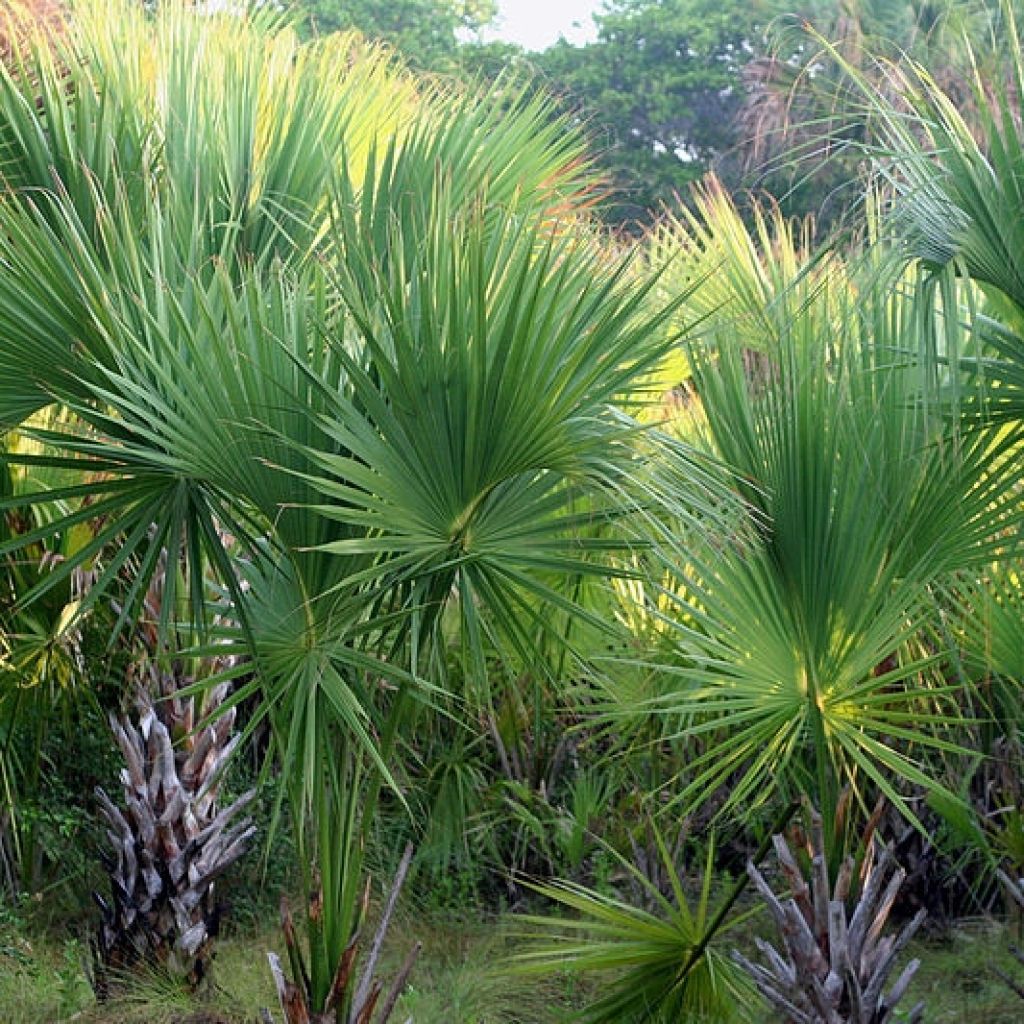

Sabal mexicana - Palmier sombrero du Mexique
Sabal mexicana
Sabal mexicana
Mexican Palmetto, Texas Palmetto
This plant carries a 24 months recovery warranty
More information
We guarantee the quality of our plants for a full growing cycle, and will replace at our expense any plant that fails to recover under normal climatic and planting conditions.
From €5.90 for pickup delivery and €6.90 for home delivery
Express home delivery from €8.90.
Does this plant fit my garden?
Set up your Plantfit profile →
Description
The Sabal mexicana is a robust palm tree widespread in Mexico, where it is found in large numbers on the coast, but also in dry or humid forests, or along rivers, in very fertile and well-drained land. It is also native to southern Texas, Honduras, and Guatemala. It is sometimes known as the Mexican sombrero palm, as its leaves were locally used to make wide-brimmed hats. It is characterised by a stout, brown false trunk covered with a beautiful lattice pattern, topped with a dense and wide crown of large fan-shaped fronds, light green in the sun but more bluish in the shade. It has honey-scented flowers and edible fruits, the size of a blueberry, with a sweet taste. It is a hardy species and easy to grow by the seaside.
Sabal mexicana belongs to the family of Arecaceae. It can reach a height of 15m in nature, probably 8 to 10m when cultivated in Europe. This palm tree, quite similar to the Sabal palmetto, grows faster if it is not lacking in heat or water. It grows slowly during the first years of cultivation, and a lack of water, although tolerated by adult specimens, also slows down its growth. It is a species that prefers clay-limestone and loamy soil and low altitudes.
This Sabal mexicana develops a single false trunk (stipe), cylindrical, straight, robust, brownish in colour, rough, sometimes reaching 35cm in diameter. It is covered by the old leaf bases that form a typical and highly decorative interlacing pattern. The trunk forms after several years. The foliage is arranged in a terminal crown at the top of the trunk, and can eventually reach a span of 6 to 7m. The crown is composed of costapalmate leaves, which means palmate leaves arranged in a fan shape around a central axis. In the Sabal mexicana, each leaf, 1.50m to 2.20m wide, is divided into 80 to 110 rigid, long and pointed segments, with filamentous edges and a bifid tip. Flowering, which occurs on relatively young individuals, consists of large branched inflorescences with white flowers, erect or pendant, emerging among the leaves and almost the same length as them. They give way to globose fruits, brown-black in colour, measuring less than 1.9cm in diameter.
The Sabal mexicana is a beautiful specimen to plant in isolation in coastal gardens, or in rows, especially in warm climates. Plant this palm tree near an entrance or on either side of a gate, or plant it in isolation near a swimming pool, it will be stunning and will amaze your visitors. Fans of exotic plants can also plant cycas and Colocasia nearby.
Report an error about the product description
Sabal mexicana in pictures


Plant habit
Flowering
Foliage
Botanical data
Sabal
mexicana
Arecaceae
Mexican Palmetto, Texas Palmetto
North America
Other Sabal
Planting and care
This palm tree shows slow to very slow growth, especially during its first 8 or 10 years, and requires sun and warmth that will promote faster shoot growth. Plant the Sabal in open ground in rather warm climates that are not too harsh, where frosts do not exceed -10°C for a very short period. Install it in well-drained, light, deep and fertile soil, ideally clayey, chalky and loamy. A moist soil will promote faster growth, but this accommodating species also accepts drier soils once the roots have gone deep. Choose the warmest and sunniest spot in the garden. Regular watering in summer promotes growth. Install it in a very sunny location and protect it from cold and dry winds. It requires little maintenance except for pruning the oldest palmate leaves close to the stem.
Planting period
Intended location
Care
This item has not been reviewed yet - be the first to leave a review about it.
Evergreen shrubs
Haven't found what you were looking for?
Hardiness is the lowest winter temperature a plant can endure without suffering serious damage or even dying. However, hardiness is affected by location (a sheltered area, such as a patio), protection (winter cover) and soil type (hardiness is improved by well-drained soil).

Photo Sharing Terms & Conditions
In order to encourage gardeners to interact and share their experiences, Promesse de fleurs offers various media enabling content to be uploaded onto its Site - in particular via the ‘Photo sharing’ module.
The User agrees to refrain from:
- Posting any content that is illegal, prejudicial, insulting, racist, inciteful to hatred, revisionist, contrary to public decency, that infringes on privacy or on the privacy rights of third parties, in particular the publicity rights of persons and goods, intellectual property rights, or the right to privacy.
- Submitting content on behalf of a third party;
- Impersonate the identity of a third party and/or publish any personal information about a third party;
In general, the User undertakes to refrain from any unethical behaviour.
All Content (in particular text, comments, files, images, photos, videos, creative works, etc.), which may be subject to property or intellectual property rights, image or other private rights, shall remain the property of the User, subject to the limited rights granted by the terms of the licence granted by Promesse de fleurs as stated below. Users are at liberty to publish or not to publish such Content on the Site, notably via the ‘Photo Sharing’ facility, and accept that this Content shall be made public and freely accessible, notably on the Internet.
Users further acknowledge, undertake to have ,and guarantee that they hold all necessary rights and permissions to publish such material on the Site, in particular with regard to the legislation in force pertaining to any privacy, property, intellectual property, image, or contractual rights, or rights of any other nature. By publishing such Content on the Site, Users acknowledge accepting full liability as publishers of the Content within the meaning of the law, and grant Promesse de fleurs, free of charge, an inclusive, worldwide licence for the said Content for the entire duration of its publication, including all reproduction, representation, up/downloading, displaying, performing, transmission, and storage rights.
Users also grant permission for their name to be linked to the Content and accept that this link may not always be made available.
By engaging in posting material, Users consent to their Content becoming automatically accessible on the Internet, in particular on other sites and/or blogs and/or web pages of the Promesse de fleurs site, including in particular social pages and the Promesse de fleurs catalogue.
Users may secure the removal of entrusted content free of charge by issuing a simple request via our contact form.
The flowering period indicated on our website applies to countries and regions located in USDA zone 8 (France, the United Kingdom, Ireland, the Netherlands, etc.)
It will vary according to where you live:
- In zones 9 to 10 (Italy, Spain, Greece, etc.), flowering will occur about 2 to 4 weeks earlier.
- In zones 6 to 7 (Germany, Poland, Slovenia, and lower mountainous regions), flowering will be delayed by 2 to 3 weeks.
- In zone 5 (Central Europe, Scandinavia), blooming will be delayed by 3 to 5 weeks.
In temperate climates, pruning of spring-flowering shrubs (forsythia, spireas, etc.) should be done just after flowering.
Pruning of summer-flowering shrubs (Indian Lilac, Perovskia, etc.) can be done in winter or spring.
In cold regions as well as with frost-sensitive plants, avoid pruning too early when severe frosts may still occur.
The planting period indicated on our website applies to countries and regions located in USDA zone 8 (France, United Kingdom, Ireland, Netherlands).
It will vary according to where you live:
- In Mediterranean zones (Marseille, Madrid, Milan, etc.), autumn and winter are the best planting periods.
- In continental zones (Strasbourg, Munich, Vienna, etc.), delay planting by 2 to 3 weeks in spring and bring it forward by 2 to 4 weeks in autumn.
- In mountainous regions (the Alps, Pyrenees, Carpathians, etc.), it is best to plant in late spring (May-June) or late summer (August-September).
The harvesting period indicated on our website applies to countries and regions in USDA zone 8 (France, England, Ireland, the Netherlands).
In colder areas (Scandinavia, Poland, Austria...) fruit and vegetable harvests are likely to be delayed by 3-4 weeks.
In warmer areas (Italy, Spain, Greece, etc.), harvesting will probably take place earlier, depending on weather conditions.
The sowing periods indicated on our website apply to countries and regions within USDA Zone 8 (France, UK, Ireland, Netherlands).
In colder areas (Scandinavia, Poland, Austria...), delay any outdoor sowing by 3-4 weeks, or sow under glass.
In warmer climes (Italy, Spain, Greece, etc.), bring outdoor sowing forward by a few weeks.

































